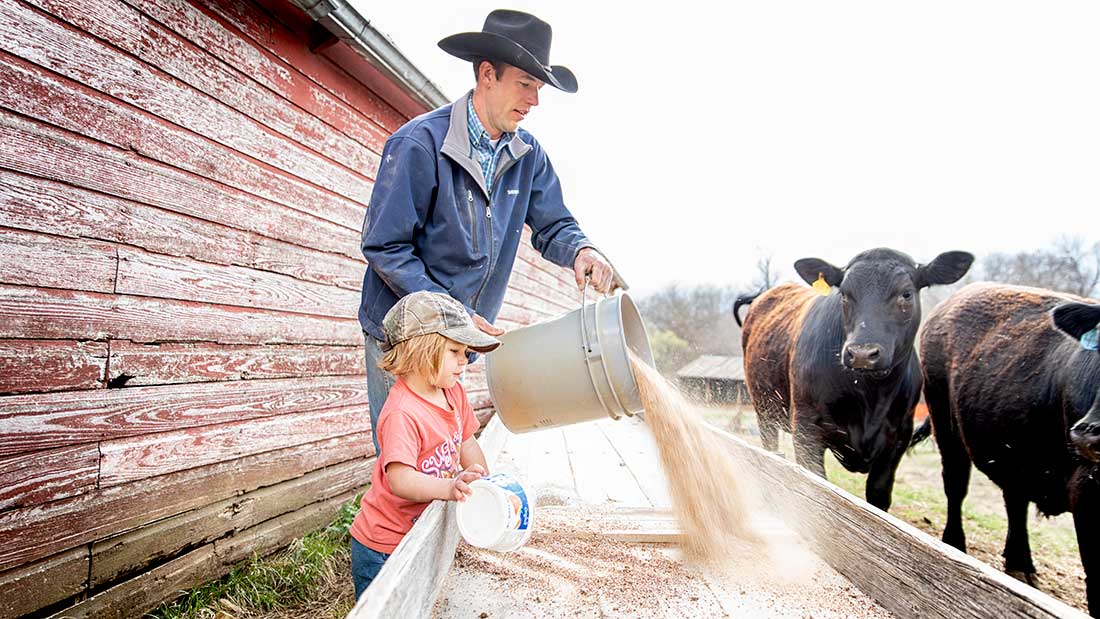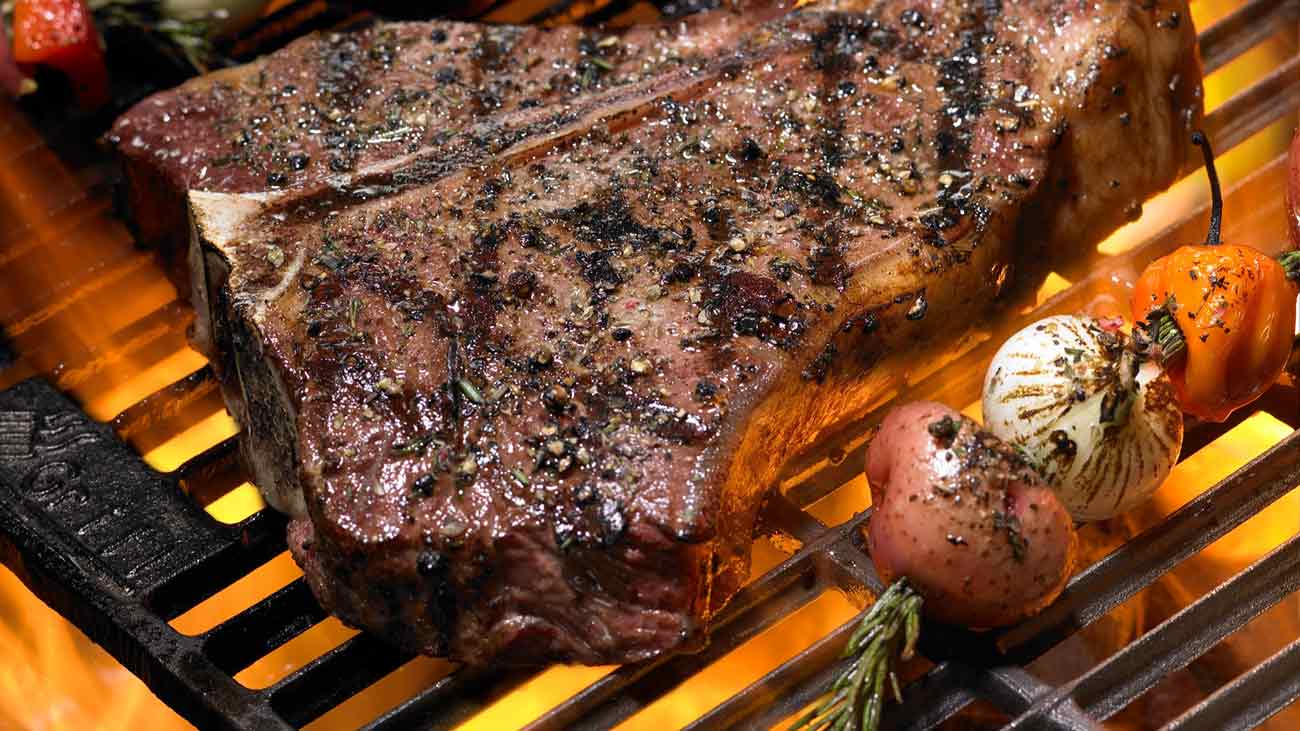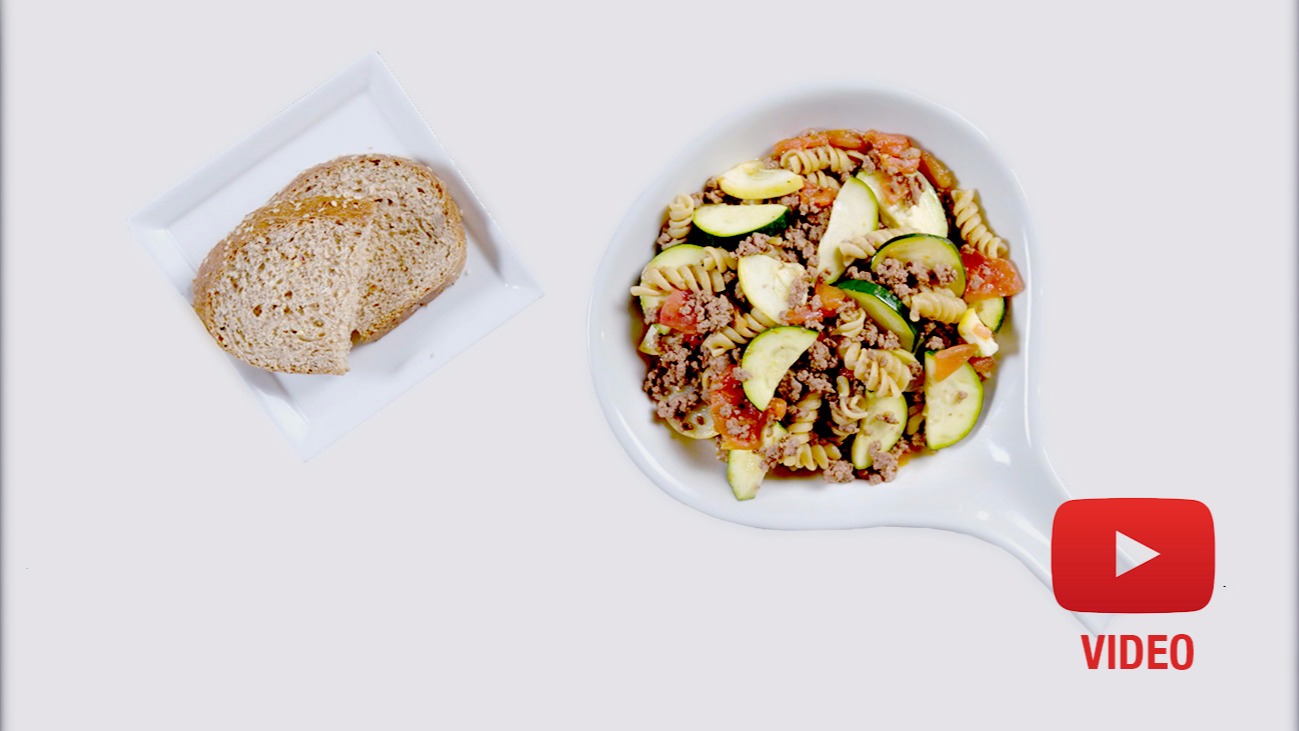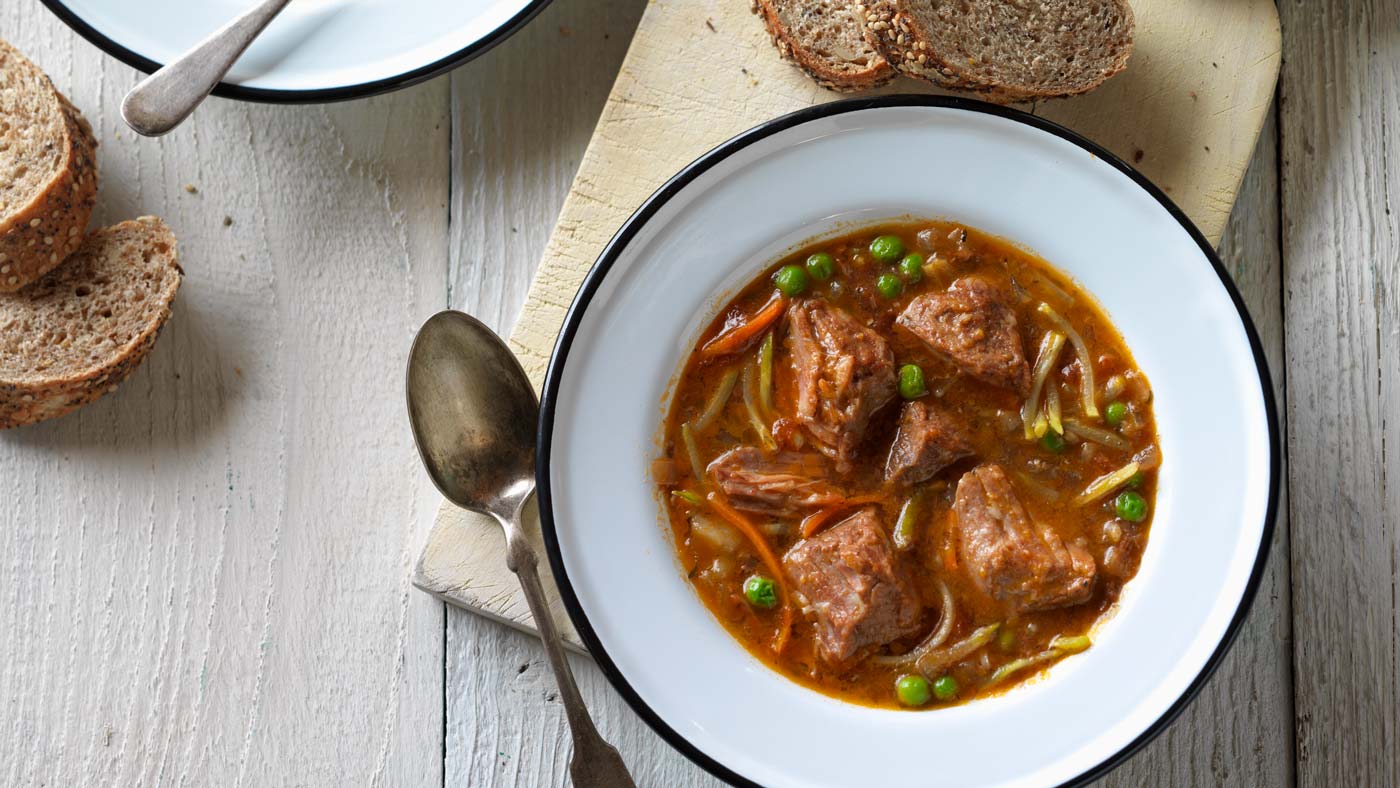Family sheds bay area lifestyle to settle down on the ranch
Meet the Kraffts, ranchers in western Kansas who left the busy California Bay Area life to focus on slowing down, spending more time together and producing beef for their family, restaurants and grocery stores. Myndi, a Southern Californian cheerleader, admits that growing up, she "knew nothing about agriculture, especially cattle". However, she wanted to know more about how her food was grown, so she decided to major in agriculture. It was at Cal Poly, a coastal school in San Luis Obispo, California, that she fell in love with raising beef, and a man whose family has raised cattle for over 100 years in western Kansas.
Check out the video below to find out more about Myndi and Jason's story.
Chore time is family time
When appropriate, the Kraffts include their children in ranch work and chores. For Jason and Myndi, being able to share their occupation and way of life with their children is "a dream come true". Myndi says, "We moved back to my husband's family ranch for the lifestyle change and the chance to really spend quality time with our children. We get a lot of that now, even if it's just doing chores together." Myndi is a former agricultural educator and takes great pride in teaching her children about where their food comes from and how to care for their cattle. She keeps the lessons and responsibilities small for now, like checking on the well-being of the cattle at the feed bunk, feeding bottle calves in the morning and evening or helping give grain to the steers. However, always a teacher at heart, she is constantly looking for the next opportunity to teach her children.

"A lot of pride and love goes into caring for these animals. We also want to be a great example to our kids on how to take care of the cattle." - Myndi Krafft
Meet Your Rancher
Where is your ranch?
Myndi (MK): We are located outside of a western Kansas town called Phillipsburg.
What is a cow / calf ranch?
MK: On a cow / calf ranch, we raise cows that give birth to a calf every year. We raise those calves and do one of two things with them. We'll keep some of the heifers that will become tomorrow's cows on our ranch. The rest of the cattle will grow on our pastures where they'll eventually become the beef you can buy in the grocery store or at the restaurant.
What is your background?
MK: I grew up in Southern California. We were close to the ocean, close to the malls and the lakes. I was the typical cheerleader, played sports, loved going to the lake and knew nothing about agriculture.
Jason (JK): I grew up on my family farm, just a few miles from our house.
How did you get involved in agriculture if you didn't grow up on a farm?
MK: I had zero experience in agriculture, especially cattle. My great-grandpa and my mom taught me a lot about gardening and horses, but that was about as much experience as I had. When I went off to college, I decided I wanted to understand more about where my food comes from so I chose a general education in agriculture. Once I started working with cattle, I fell in love with it. I love the cows and their temperament, but I also love the technology behind growing the best beef I can while taking care of the environment and our natural resources.
How did a Southern Californian cheerleader marry a Kansas rancher?
MK: We met while at Cal Poly and we were taking a class together called Artificial Insemination (AI) to learn how to breed the cows. Jason was already certified, so the professor told him if I didn’t learn how to properly AI a cow, he’d have to teach me.
JK: The professor also told me I was going to flunk the class if she didn’t pass. So we spent a lot of time studying together.
MK: Yeah. We were practically dating by the end of the class.
After college you moved to the Bay Area. What did you do there?
MK: I taught high school agriculture for 10 years in the Bay Area. It was a very urban population, and I loved it. Most of the kids didn’t grow up on a farm or know where their food or milk came from. I spent my time teaching them how their food was produced and introducing them to working with livestock, especially cattle, through the county fair. When I started teaching at the school, it was just two teachers and about 200 students in the program. When I left, we had four teachers and over 600 students.
What made you want to move from California to Kansas?
MK Life in the Bay Area was incredibly fast-paced and very busy. We hardly ever saw our kids between daycare and work. We also didn’t live in the safest area. The kids were safe in the backyard, but we couldn’t let them beyond the front door. We wanted a place that was safe for the kids, where they could run outside and have space to play. We also wanted our kids to understand where their food comes from.
JK: We wanted to spend more time around our kids. Now we’re doing everything as a family. We do chores as a family. We watch the cattle as a family. We want as much quality time as possible, and we have that here on the farm.
What's your average day?
JK: Our day really depends on the season. But, no matter what time of the year it is, we’re always focused on the cattle. We daily make sure they are cared for and that they have enough clean water. Are they doing okay in the pastures? During the winter we make sure they have enough hay and grain.
MK: Our oldest daughter goes to school in the morning, so we get her up and cook her breakfast. Then, we have our meeting in the morning before our youngest wakes up. One great thing about being out here as a family is that our youngest daughter usually comes along when we do most of our chores. Our oldest also has a bucket calf. It was a twin and the mother couldn’t take care of both of them at the same time, so for the health and safety of the calf, we decided to bottle feed it. It’s her responsibility to feed it when she gets home from school. She’s caring for it and is looking forward to taking it to the county fair.
Are you happy you moved?
MK: Coming from not being able to let the kids go beyond the front door to now watching them climb the fences and take care of the animals, it’s everything I could have ever dreamed of for my daughters.
JK: I hope they learn where their food comes from and that families like ours across the country are producing beef for the restaurant and grocery stores that ends up on everyone's table. If they learn that, then I will have done my job.
MK: I also want them to know that lots of effort, time and love goes into growing food for others, and that’s not a responsibility we should take lightly.
What is one thing that has surprised you about moving to rural Kansas?
MK: I never knew the school bus would come right to your front door. That never happened in California.
Do you eat the beef that comes off your ranch?
How has your perception of beef changed since growing up in Southern California?
MK: My perception has changed a lot. I knew nothing about agriculture and beef...now I'm producing it. Understanding the entire process has made me trust it completely. I wouldn’t feed it to my kids if it wasn’t something I trusted. These animals are well taken care of and monitored on the daily.
What is one thing you miss about California?
MK: Definitely the sushi.
The Kraffts
Phillipsburg, Kansas
Cow/Calf Ranch
Cows are bred and calves are born and raised every year on cow-calf farms and ranches, spending time grazing on grass pastures within sight of their mothers.



